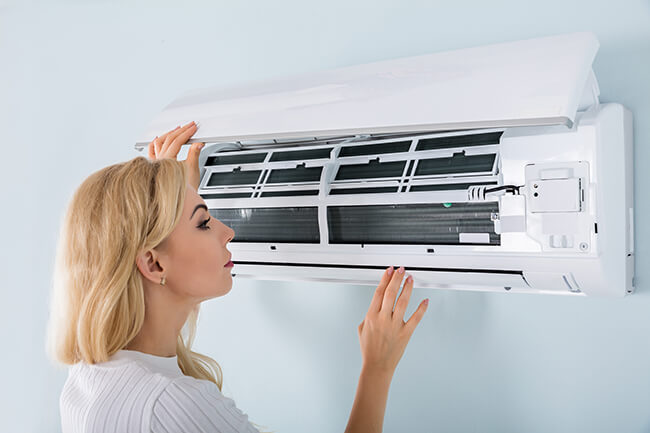How To Spot Mold In Your HVAC System

Though few know it, mold grows in nearly every excessively moist space. If a significant amount of mold accumulates, it can harm your health. Mold that spreads through a building’s air will likely make you and your loved ones quite sick.
In the context of heating and cooling systems, mold most commonly forms on drip pans, air conditioner evaporator coils and in the ductwork. These are the ideal spaces for mold growth as they are quite moist. Unfortunately, these spaces are positioned in concealed areas that are rarely checked by homeowners. Let’s take a look at how to spot mold in your HVAC system.
Signs of Mold Growth: Use Your Eyes
Take a close look at your home’s drip pans, evaporator coils and ductwork for mold. Mold manifests in the form of a black residue. If you spot any signs of mold in these spaces, you must eliminate it. Get into the habit of checking for mold as often as possible. This is especially true for humid living spaces. So don’t hesitate to incorporate visual inspections of ductwork, evaporator coils, and drip pans into your weekly cleaning routine. The furnace filter and registers are also common places for mold growth that should be checked on a regular basis.
However, even if you do not spot mold with your naked eye, you still might be at risk. Keep in mind that mold can grow in any area with moisture. If your HVAC system or any other portion of your home has pools of water or condensation, there is the potential for mold. So check the outside of the vents for condensation. Take a look at the interior of your registers. If your HVAC system’s coils are working harder than they should and the drip pans are blocked, the moisture that develops is the perfect space for mold to grow. Mold spores and the excessive moisture and condensation that permit their growth must be cleaned as quickly as possible to preserve your health.
Identify Mold by Its Odor
There are portions of your home’s HVAC ductwork that are out of sight. If you can’t see in the registers or down into the drip pans, use your other senses. Mold that grows in ductwork emits a strong odor of mildew. This scent will spread through your living space. If you notice such an odor, turn off the system and wait 15 minutes. Turn it back on. If the odor is gone or isn’t as strong when the system is off yet returns when it is on, there is a good chance that mold exists in your ductwork.
Rely on a Heating and Cooling Professional
There is still a chance your home’s heating and cooling system has mold even if you can’t spot it with the naked eye or smell it. Do not hesitate to reach out to a professional mold removal technician to determine if mold is in your HVAC system. This expert’s in-depth analysis of your heating and cooling systems will give you complete certainty as to whether your HVAC system is compromised. Though a mold check conducted by a professional will cost some money, it is the best way to ensure the health of your loved ones.
Don’t let Mold get the Best of You!
Take preventative action by looking for the signs of mold in your HVAC system as described above. Conduct a mold check at least once every six months or even once per month. If you spot mold, eliminate it so you and your loved ones don’t end up with sinus issues, coughs, itchy eyes and other health problems.
